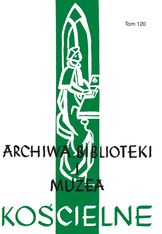RIVALRY FOR INFLUENCE BETWEEN THE CATHOLIC CHURCH AND POLITICAL REGIMES IN THE LITHUANIAN EDUCATION SYSTEM IN 1918–1940
RIVALRY FOR INFLUENCE BETWEEN THE CATHOLIC CHURCH AND POLITICAL REGIMES IN THE LITHUANIAN EDUCATION SYSTEM IN 1918–1940
Author(s): Dangiras MačiulisSubject(s): Christian Theology and Religion, History of Education, State/Government and Education, Pre-WW I & WW I (1900 -1919), Interwar Period (1920 - 1939)
Published by: Katolicki Uniwersytet Lubelski Jana Pawła II - Wydział Teologii
Keywords: Catholic Church; Catholic schools; Republic of Lithuania (1918-1940); cultural autonomy; education policy;
Summary/Abstract: In the interwar period of the 20th century, the formation of the national education system took place in Lithuania. The Catholic Church sought to actively participate in the creation of this system in order to consolidate the principles of the organization of its educational system. The political regimes in interwar Lithuania sought to create a unified national education system, and the Catholic Church sought to make the educational system in line with its principles in the field of education. The article reviews how the Catholic Church and political regimes competed for dominant influence in the field of education in Lithuania during the interwar period (1918–1940). It is said that the struggle for influence in youth education was most clearly manifested in the field of secondary education (higher than primary education), because the position of the Catholic Church in this field was the strongest: Catholic educational societies had created a network of private schools. The Catholic Church and the Christian Democrats defending its position held the view that only a confessional school that nurtures the Christian spirit is suitable for Catholic children. Therefore, the state is required to finance private Catholic schools that meet the educational ideals of Catholic society. Catholic public figures and Christian Democrat politicians proposed to implement the principle of cultural autonomy in the country’s education system, which would guarantee the financing of private Catholic schools. During the period of Lithuanian parliamentarism (before the coup d’état of December 17, 1926), the position of the Catholic Church in the field of education clashed most strongly with the viewpoint of left-wing political forces. The leftist political forces sought to entrust the state with the right to determine educational ideals. The idea of a denominational school was alien to the left wing – they considered it an internal concern of the religious community itself, and the introduction of compulsory religious education in schools contradicted the fundamental values of the left-wing activists. After December 17, 1926 the nationalist political regime, established during the coup d’état, was guided by the rule that the monopoly of education must be in the hands of the state – only it has the exclusive right to educate its citizens. These attitudes were reflected in the education reform carried out in the mid-forties, which not only unified the educational chain up to high school, but also demonstrated the government’s unwavering political course towards the monopolization of the educational system. The monopolization of education by the state brought the nationalist government into conflict with the Catholic Church, which, defending its rights in the education system, demanded the implementation of the principle of cultural autonomy. The government sought to monopolize education and ended this process in 1938, the year the new Constitution of Lithuania was adopted.
Journal: Archiwa, Biblioteki i Muzea Kościelne
- Issue Year: 2023
- Issue No: 120
- Page Range: 289-310
- Page Count: 22
- Language: English

